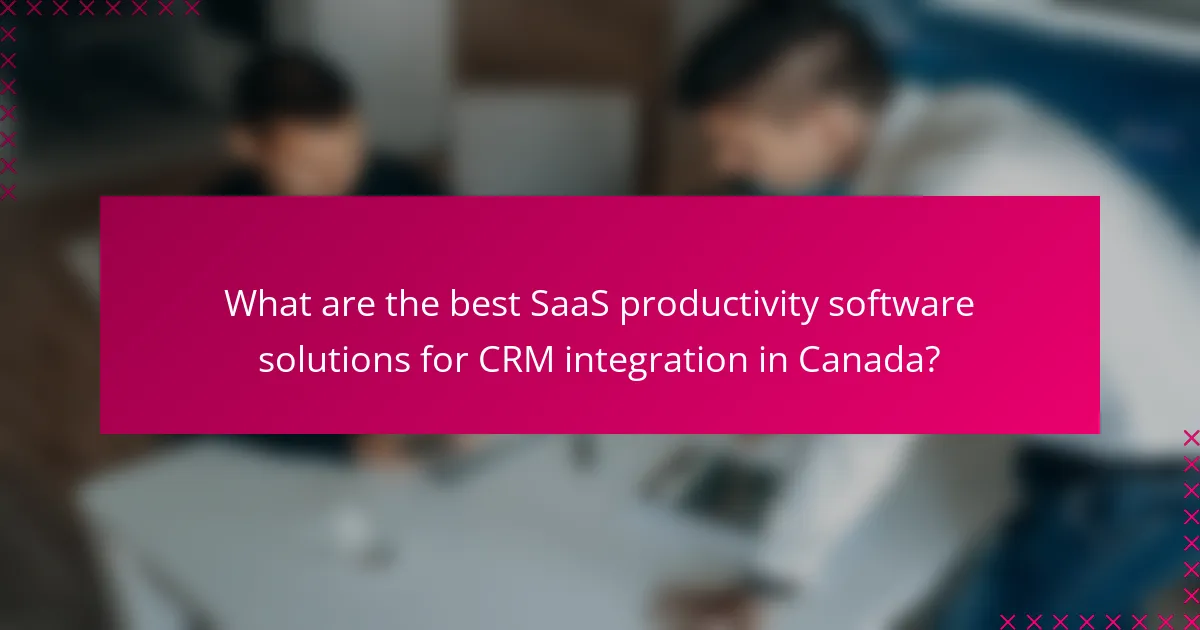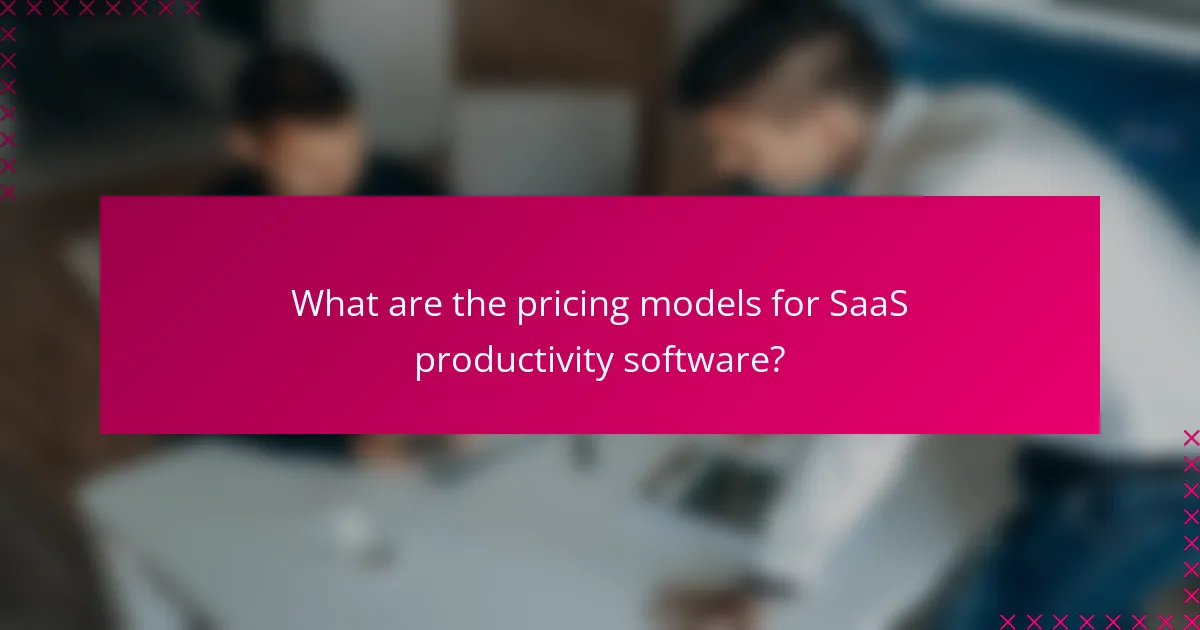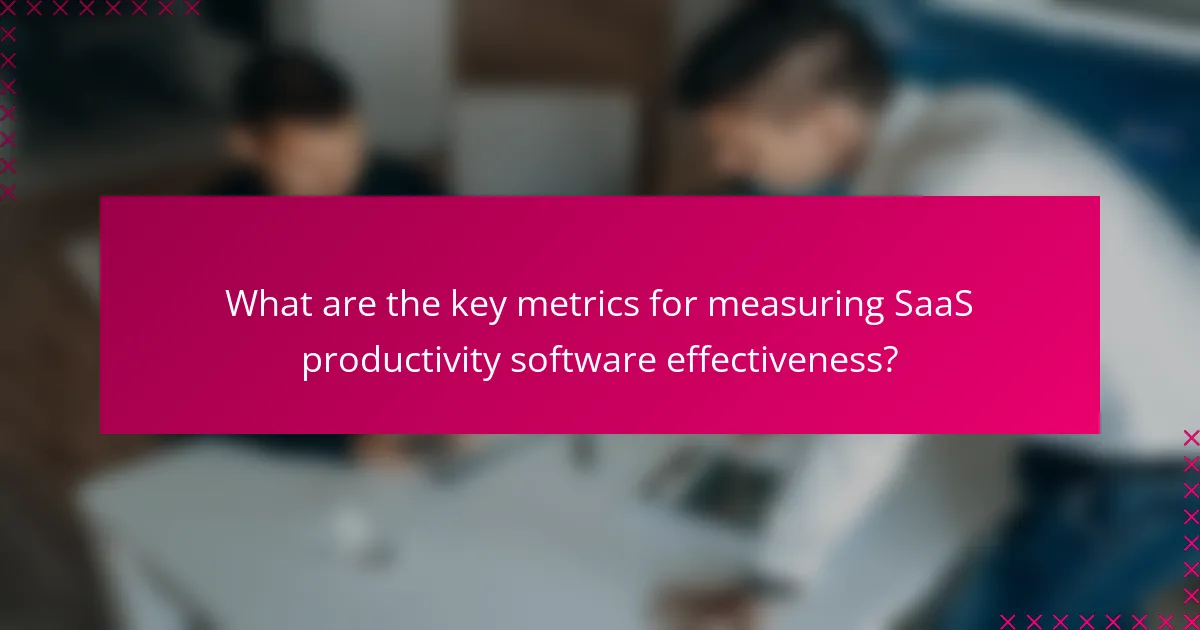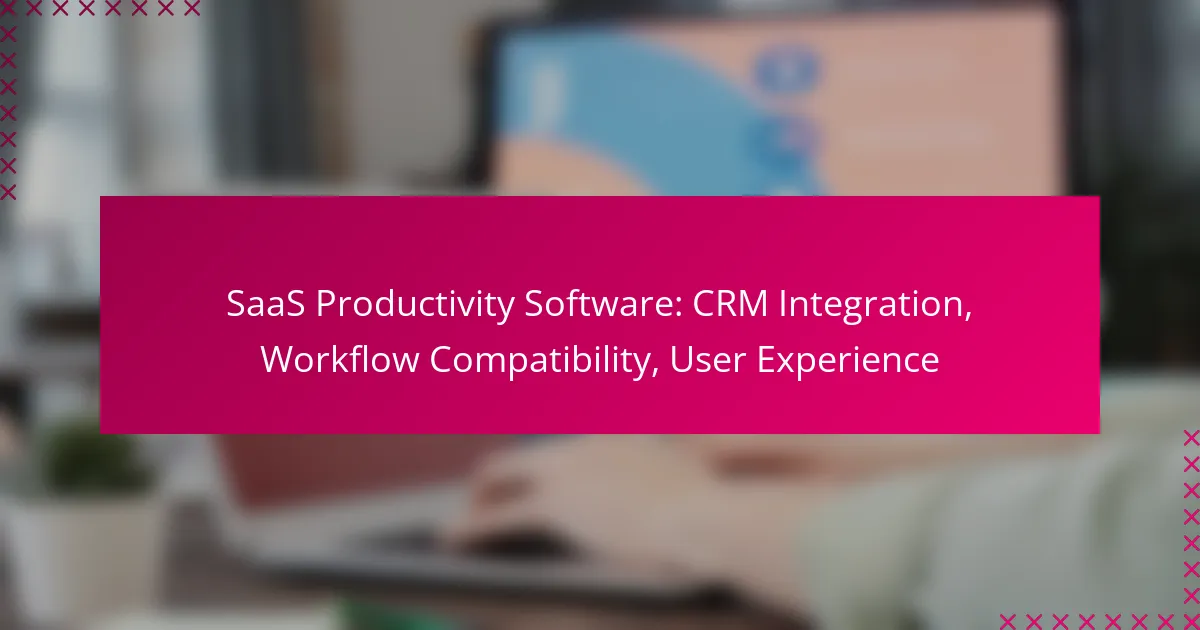SaaS productivity software is essential for businesses seeking effective CRM integration and enhanced workflow compatibility. Leading solutions like Salesforce, HubSpot, and Zoho provide robust features that streamline customer relationship management while improving user experience. By focusing on intuitive interfaces and customizable dashboards, these platforms ensure that users can maximize efficiency and productivity in their operations.

What are the best SaaS productivity software solutions for CRM integration in Canada?
In Canada, the best SaaS productivity software solutions for CRM integration include Salesforce, HubSpot, and Zoho. These platforms offer robust features that enhance workflow compatibility and user experience, making them ideal for businesses looking to streamline customer relationship management.
Salesforce CRM
Salesforce CRM is a leading solution known for its extensive customization and integration capabilities. It allows businesses to tailor their workflows and connect with numerous third-party applications, enhancing productivity. The platform is particularly beneficial for larger organizations that require complex data management and reporting.
When using Salesforce, consider its pricing structure, which can range from low hundreds to thousands of Canadian dollars per user per month, depending on the features selected. Ensure you take advantage of its training resources to maximize your team’s efficiency.
HubSpot CRM
HubSpot CRM is a user-friendly platform that offers a free tier, making it accessible for small to medium-sized businesses in Canada. Its seamless integration with marketing tools allows for a unified approach to customer engagement, enhancing overall productivity.
HubSpot’s intuitive interface reduces the learning curve for new users, which is a significant advantage. However, as your business grows, you may need to upgrade to paid plans that can range from low hundreds to over a thousand Canadian dollars monthly, depending on the features you need.
Zoho CRM
Zoho CRM provides a comprehensive suite of tools designed for businesses of all sizes, with a strong focus on automation and analytics. Its integration capabilities with other Zoho applications and external tools make it a versatile choice for enhancing workflow efficiency.
Pricing for Zoho CRM is competitive, typically starting at low tens of Canadian dollars per user per month, making it an attractive option for budget-conscious businesses. Take advantage of its customization options to tailor the system to your specific needs and avoid common pitfalls like overcomplicating workflows.

How does workflow compatibility impact SaaS productivity software?
Workflow compatibility significantly enhances the efficiency of SaaS productivity software by ensuring that various tools and applications work seamlessly together. This integration allows users to automate tasks, reduce manual input, and streamline operations, ultimately leading to improved productivity and user satisfaction.
Streamlined processes
Streamlined processes are a direct benefit of workflow compatibility in SaaS applications. When different software tools integrate well, data can flow smoothly between them, minimizing the need for repetitive tasks. For instance, a CRM system that connects with email marketing software can automatically update contact lists and track interactions, saving time and reducing errors.
To achieve streamlined processes, organizations should prioritize selecting SaaS tools that offer robust integration capabilities. Look for platforms that support APIs or built-in connectors, which facilitate easy data exchange. Regularly reviewing and optimizing these workflows can help maintain efficiency as business needs evolve.
Improved team collaboration
Improved team collaboration is another key advantage of workflow compatibility in SaaS productivity software. When tools are compatible, team members can easily share information and collaborate on projects in real-time. For example, a project management tool that integrates with a messaging platform allows teams to communicate updates instantly, enhancing coordination.
To foster better collaboration, organizations should encourage the use of integrated tools that provide a unified view of projects and tasks. Training staff on these systems can also help maximize their potential. Avoid using multiple disconnected applications, as this can lead to confusion and miscommunication among team members.

What user experience features should I look for in SaaS productivity software?
When evaluating SaaS productivity software, focus on user experience features that enhance usability and efficiency. Key aspects include an intuitive interface and customizable dashboards, which can significantly impact how effectively users interact with the software.
Intuitive interface
An intuitive interface allows users to navigate the software effortlessly, reducing the learning curve and increasing productivity. Look for clean layouts, logical navigation paths, and easily accessible features that align with common user tasks.
Consider software that employs familiar design patterns and visual cues, such as icons and tooltips, to guide users. A well-designed interface should enable users to complete tasks with minimal clicks, ideally within a few seconds for routine actions.
Customizable dashboards
Customizable dashboards empower users to tailor their workspace according to their specific needs and preferences. This feature allows individuals to prioritize information, track key metrics, and access frequently used tools all in one view.
When assessing this feature, check if the software offers drag-and-drop functionality, widget options, and the ability to integrate data from various sources. A flexible dashboard can enhance user engagement and ensure that critical information is readily available, improving overall workflow efficiency.

How do I evaluate CRM integration capabilities?
To evaluate CRM integration capabilities, focus on how well the software connects with other tools and systems. Key factors include the availability of APIs, support for third-party applications, and overall user experience during integration.
API availability
API availability is crucial for seamless CRM integration. A robust API allows your CRM to communicate effectively with other software, facilitating data exchange and automation. Look for APIs that are well-documented, easy to use, and support common programming languages.
Check if the API offers features like REST or SOAP protocols, which are widely used for integrations. Additionally, consider the rate limits and data formats supported, as these can impact performance and flexibility.
Third-party app support
Third-party app support enhances your CRM’s functionality by allowing it to work with other tools you already use. Investigate the range of applications that can integrate with your CRM, such as marketing automation platforms, project management tools, and communication software.
Evaluate the ease of integration with these apps. Some CRMs provide pre-built connectors or integration marketplaces, which can simplify the setup process. Ensure that the integrations meet your business needs and that they are regularly updated to maintain compatibility.

What are the pricing models for SaaS productivity software?
SaaS productivity software typically employs various pricing models, each catering to different user needs and business strategies. The most common models include subscription-based pricing and freemium options, allowing businesses to choose a plan that aligns with their budget and usage requirements.
Subscription-based pricing
Subscription-based pricing is a prevalent model where users pay a recurring fee, often monthly or annually, for access to the software. This model provides predictable costs and often includes updates and support as part of the package.
Prices can vary widely based on features, ranging from around $10 to several hundred dollars per user per month. Businesses should assess their needs carefully to select a plan that offers the best value without unnecessary features.
Common pitfalls include underestimating the total cost of ownership, which can include additional fees for extra features or user licenses. It’s advisable to review the terms of service to understand any potential price increases over time.
Freemium models
Freemium models allow users to access basic features of the software for free, with the option to upgrade to a paid plan for advanced functionalities. This approach can be beneficial for startups or small businesses looking to minimize initial costs.
While freemium models can attract a large user base, they often come with limitations, such as reduced storage, fewer integrations, or restricted support. Users should evaluate whether the free version meets their needs or if the paid features are essential for their operations.
To maximize the benefits of a freemium model, businesses should clearly define their requirements and consider the long-term costs of upgrading as their needs grow. Regularly reviewing usage can help determine if it’s time to transition to a paid plan.

How can I ensure data security in SaaS productivity tools?
To ensure data security in SaaS productivity tools, focus on implementing strong encryption methods and adhering to relevant compliance regulations. This approach helps protect sensitive information from unauthorized access and ensures that your organization meets legal standards.
Encryption standards
Encryption standards are essential for safeguarding data in SaaS applications. Look for tools that utilize advanced encryption protocols such as AES-256, which is widely recognized for its robust security. Additionally, ensure that data is encrypted both in transit and at rest to provide comprehensive protection.
When evaluating SaaS providers, inquire about their encryption practices. A reputable provider should be transparent about their encryption methods and offer documentation that outlines their security measures. Regularly review and update your encryption strategies to stay ahead of potential threats.
Compliance with regulations
Compliance with regulations is crucial for maintaining data security in SaaS productivity tools. Familiarize yourself with relevant regulations such as GDPR in Europe or HIPAA in the United States, which set strict guidelines for data protection and privacy. Non-compliance can lead to significant fines and reputational damage.
Choose SaaS providers that demonstrate compliance with these regulations. They should provide certifications or reports that verify their adherence to industry standards. Regular audits and assessments can help ensure ongoing compliance and identify areas for improvement in your data security practices.

What are the key metrics for measuring SaaS productivity software effectiveness?
Key metrics for measuring the effectiveness of SaaS productivity software include user adoption rates and ROI calculations. These metrics provide insights into how well the software is being utilized and the financial returns it generates for the organization.
User adoption rates
User adoption rates indicate how many users are actively engaging with the SaaS software compared to the total number of users. A high adoption rate suggests that the software is meeting user needs and is easy to use, while a low rate may highlight issues with training, usability, or relevance.
To measure user adoption, track metrics such as daily active users (DAU) or monthly active users (MAU). Aim for at least 70% of users to engage with the software regularly to ensure it is effectively integrated into workflows.
ROI calculations
ROI calculations assess the financial return generated by the SaaS productivity software relative to its costs. To calculate ROI, subtract the total costs of the software from the total benefits gained, then divide by the total costs and multiply by 100 to get a percentage.
Consider both direct and indirect benefits, such as increased sales, improved efficiency, and time savings. A positive ROI, typically above 20%, indicates that the software is a worthwhile investment for the organization.
